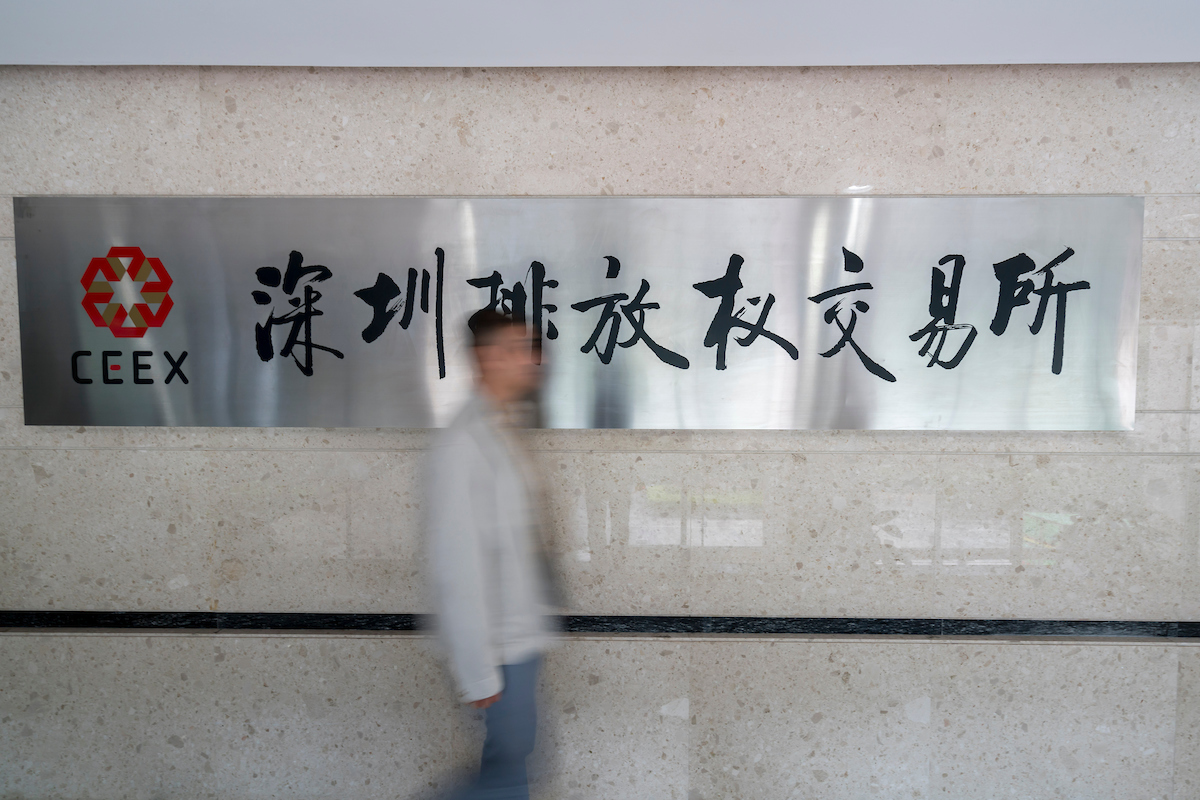Dirk Forrister of IETA expects another banner year for carbon pricing and hopes that delegates who will meet in Chile in 2019 will break the deadlock over how countries can meet their climate goals through market mechanisms
The annual UN climate summit ended in cheers, with completion of most of the Paris implementation rulebook. But there is a gaping hole in the market provisions, which were delayed for another year. The market section is urgently needed, because it could unlock billions in private investment in clean technology to combat climate change.
Negotiators meeting in Katowice, Poland, in December deadlocked on a set of rules that would guide nations in how to transfer emissions reductions in the market. When countries that over achieve their carbon-cutting targets transfer reductions to nations that fall short of their goals, both can meet their goals at lower cost.
The Katowice Package contains a basic guideline for reporting market transfers, but the more detailed policy guidance is still a work in progress. Delegates from nearly 200 countries will pick up this issue in their next meeting slated for Santiago, Chile, in 2019. It means that countries can start to explore market linkages as they consider ways of strengthening ambition.
2018 has been a banner year for carbon pricing, with prices strengthening in the flagship European market
Despite the setback in Poland, 2018 has been a banner year for carbon pricing, with prices strengthening in the flagship European market and support growing for market mechanisms around the world.
More and more countries are taking the view that using the power of markets to drive low-cost emissions reductions must be a key component of delivering their nationally determined contributions (NDCs) to the Paris Agreement.
The Intergovernmental Panel on Climate Change’s latest report highlights the scale of the challenge: to keep global temperature increases to 1.5°C, the world needs to achieve net zero carbon emissions by 2050.

The Paris rules cover elements of the agreement, including financial contributions to assist developing and vulnerable countries, how to account for carbon reductions, a mechanism to raise ambition as time passes, and, in particular, rules on how nations will be able to transfer emission reductions among themselves in a market mechanism.
While the principle of market mechanisms is now an accepted element of the Paris Agreement, there remain many aspects of carbon pricing that divide nations. The coming year will see the debate shift to how nations will use the future mechanisms guided by the rulebook.
The rulebook will need to support the growing number of emissions markets that are being built around the world. 2018 has seen big changes that give us cause for optimism that the world’s response to climate change is beginning to ramp up.
Britain’s withdrawal from the European Union has created questions about how it will link back to the EU ETS
Let’s take a quick tour of what’s happening in the world’s carbon markets.
In the largest carbon market in the world – the EU’s Emissions Trading System – prices soared to a 10-year high. Britain’s withdrawal from the European Union, however, has created questions about how it will link back to the EU ETS, or whether it will pursue other pricing options.
Europe hogged many of the headlines this year, as prices more than trebled in the first nine months. A key reform to the supply of allowances means that the market’s surplus will be gradually absorbed over the next five years. Traders and industrial companies have scrambled to position themselves ahead of this tightening of supply and demand.

The news was more mixed on the other side of the Atlantic. In the second half of the year, politicians in Ontario, the newest market, repealed emissions-trading legislation and quit the Western Climate Initiative (WCI), run with California and Quebec, causing serious disruption for market participants. It also increased business uncertainty about whether and how the province will meet its share of Canada’s contribution to the Paris goals.
More positively, the Regional Greenhouse Gas Initiative (RGGI), a market that comprises nine north-eastern US states, began negotiations to admit two new states, New Jersey and Virginia. Other states are also exploring RGGI, responding to pressure to step up in the absence of federal leadership.
RGGI administrators are assessing whether to broaden the coverage of the market to include transport, following the lead set by the WCI. RGGI currently only covers greenhouse gases from power generation, representing around 10% of its member state emissions. In contrast, California covers 85% of state emissions, including energy, industrial and transport emissions. A RGGI expansion could improve its prospects for linking with the WCI or other markets.
In Latin America, efforts to build carbon pricing mechanisms made great strides in 2018
Over on the west coast, California took a major step forward when its legislature overcame strong political opposition to approve an extension of the state’s economy-wide carbon market past 2021. It passed with bipartisan support, giving industries greater clarity for their long-term planning and delivering benefits to citizens concerned about climate impacts.
Californian regulators have also been holding talks with their RGGI counterparts about how the two markets might link up in future. This could represent a major step forward: linking markets that don’t have the same sectoral coverage could potentially open up a myriad of opportunities around the world.
In Latin America, efforts to build carbon-pricing mechanisms made great strides in 2018, and this region is seen as one of the high hopes for the coming year.

In October, Mexico issued draft regulations for a carbon market, with a three-year pilot phase set to start in 2019. However, the election of Andrés Manuel López Obrador from the left-wing Morena party in the summer has delayed the roll-out of rules.
Chile and Colombia, which have already implemented a carbon tax for thermal power generators and fuels respectively, are both considering how to evolve towards greater use of market approaches.
In the southern hemisphere, New Zealand has embarked on a thorough review of its emissions trading system, preparing for the new structure that will emerge from the Paris Agreement.
I’s clear that China remains committed to using an emissions market to set a price on carbon.
New Zealand’s cap-and-trade system is the only one that allows forestry to generate tradable emission certificates, and the revamp is intended to extend coverage to the agriculture sector: the country’s emissions profile is dominated by methane from the livestock industry.
Many eyes will also be on China in 2019: a year ago the country’s leadership unveiled a nationwide emissions market, and authorities are still working to develop regulations covering key elements such as reporting and verification of emissions, the allocation of allowances and trading rules.
The next year is likely to be spent fine-tuning these rules and building further regulations that will govern how installations can trade emissions between themselves. From this, it’s clear that China remains committed to using an emissions market to set a price on carbon.

Carbon pricing isn’t only a question of markets or taxes. More and more private sector companies are developing an internal price on carbon, one that helps dictate investments for the future and to manage climate-related risks from their day-to-day operations.
According to the CDP (formerly the Carbon Disclosure Project), more than 1,400 companies worldwide had set an internal carbon price in 2017, an eight-fold increase from 2013. Among these are some of the largest companies in the world: ENEL, Ferrovial, Unilever, Carrefour and LafargeHolcim.
For many enterprises, an internal carbon price anticipates regulatory changes. The rapid uptake of internal pricing can therefore be viewed as an indicator of the direction of travel for government policy.
2018 has been a stellar year for carbon pricing, and 2019 promises to be just as successful, proof positive that the momentum generated by the Paris Agreement is being leveraged at company, national and regional level.

Dirk Forrister is CEO of the International Emissions Trading Association, a nonprofit international business coalition that promotes market solutions to climate change. @dforrister27


